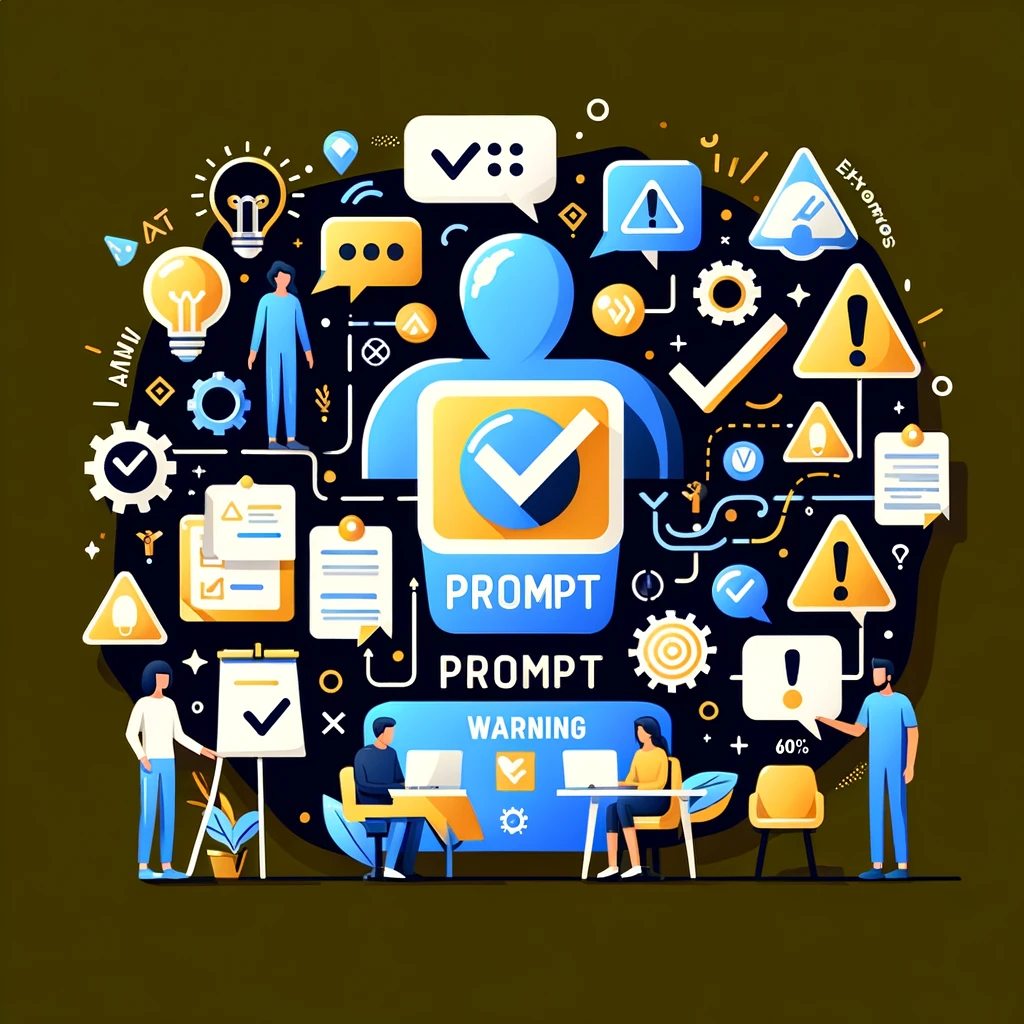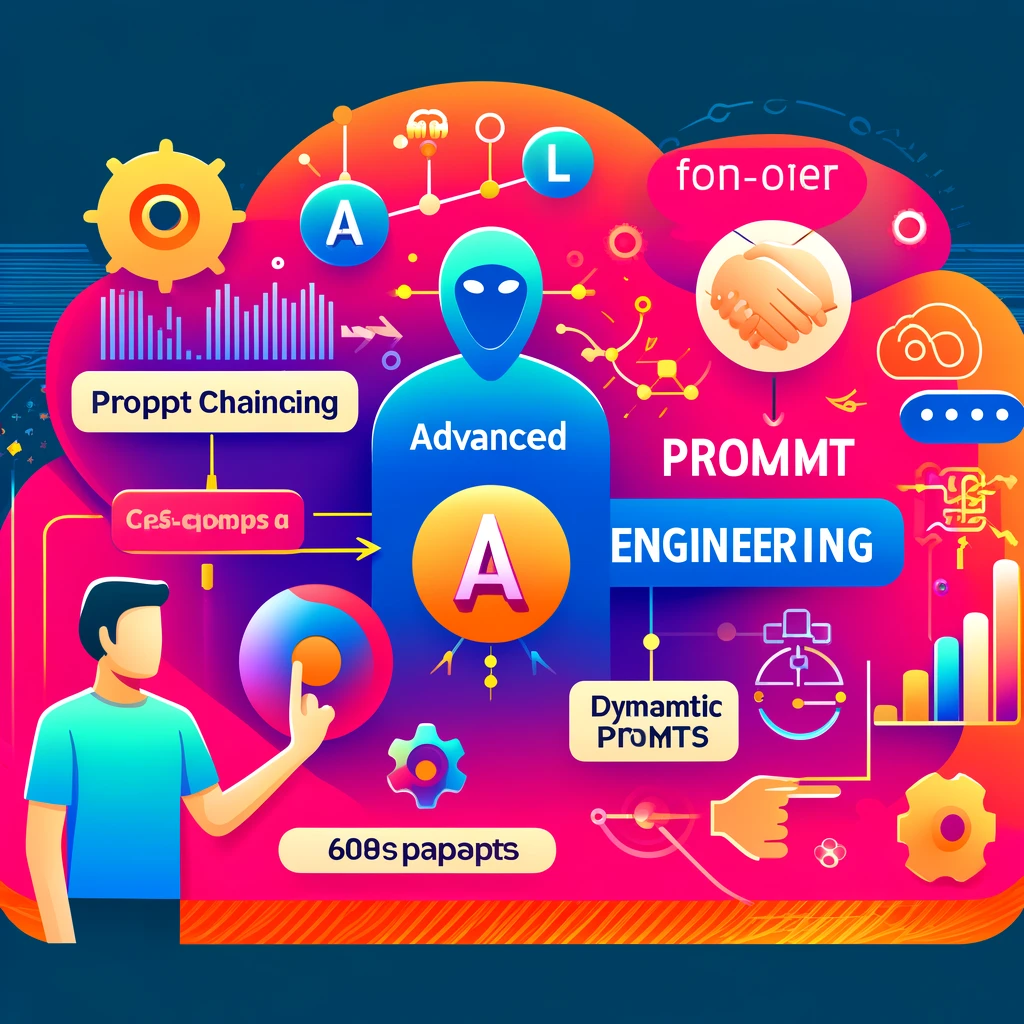
Principles of Effective Prompt Writing
Now, let’s dive into the principles of effective prompt writing. Crafting a good prompt is both an art and a science, and we’re here to help you master it.
Introduction
Effective prompts are clear, concise, and contextually relevant. They guide the AI to generate the desired response without ambiguity. Let’s explore the key principles of effective prompt writing.
Key Principles
Here are some key principles to keep in mind when writing prompts:
- Be Specific: Clearly state what you want the AI to do. Avoid vague instructions. Specific prompts lead to more accurate and relevant responses.
- Provide Context: Give enough background information to help the AI understand the request. Contextual information helps the AI generate more precise and relevant answers.
- Use Simple Language: Avoid overly complex language or jargon. Simple language ensures that the AI understands your prompt clearly and responds accurately.
- Be Concise: Keep your prompts as brief as possible while still providing the necessary information. Concise prompts reduce the likelihood of misinterpretation.
- Ensure Relevance: Make sure the prompt is relevant to the task at hand. Irrelevant details can confuse the AI and lead to off-topic responses.
Example Prompts
Let’s look at some examples to understand these principles in action:
Weak Prompt: "Tell me about history."
Strong Prompt: "Provide a brief summary of the key events in World War II."
Another example:
Weak Prompt: "Describe a book."
Strong Prompt: "Describe the plot and main characters of 'To Kill a Mockingbird'."
Hands-On Exercise
Practice creating prompts based on the principles we’ve discussed. Here’s an example exercise:
Instruction: "Write a thank-you note for a gift."
Context: "The gift was a book on AI."
Parameters: "The note should be sincere and about 100 words."
Share your prompts in the comments and compare them with others. Discuss how you applied the principles and any challenges you faced.
Advanced Techniques in Prompt Writing
Once you are comfortable with the basic principles, you can explore advanced techniques to further refine your prompts. These advanced techniques will help you craft prompts that guide the AI to provide more nuanced, insightful, and comprehensive responses.
Layered Prompts
Layered prompts involve breaking down complex requests into multiple layers of prompts. This approach allows the AI to address each layer step-by-step, ensuring a thorough and detailed response. Layered prompts are especially useful for tasks that require deep analysis or multi-faceted explanations.
How to Implement Layered Prompts:
- Identify the Main Task: Break down the primary task into smaller, logical components.
- Create Sequential Layers: Develop prompts for each component, ensuring they build on each other.
- Link the Layers: Use the response from one layer as the context for the next layer.
Example:
Task: Analyze a novel.
- Layer 1 Prompt: "Summarize the plot of the book 'To Kill a Mockingbird'."
- Layer 2 Prompt: "Analyze the main themes presented in 'To Kill a Mockingbird' based on the plot summary."
- Layer 3 Prompt: "Discuss the significance of the main characters in advancing these themes."
- Layer 4 Prompt: "Evaluate the impact of the novel's setting on the story and its themes."
Adaptive Prompts
Adaptive prompts adjust the prompt based on the AI’s previous responses. This technique creates a more interactive and responsive experience, allowing you to refine and direct the AI’s output dynamically. Adaptive prompts are useful for iterative tasks where feedback and refinement are crucial.
How to Implement Adaptive Prompts:
- Start with a Broad Prompt: Begin with a general question or task to gauge the AI's initial response.
- Evaluate the Response: Assess the AI’s output for relevance and accuracy.
- Refine the Prompt: Modify subsequent prompts based on the AI’s previous responses to narrow down or expand the scope.
Example:
Task: Explore the impact of a technological innovation.
- Initial Prompt: "Describe the main features of blockchain technology."
- Follow-up Prompt: "Based on the features you described, explain how blockchain can enhance security in financial transactions."
- Further Refinement: "Discuss potential challenges and limitations of implementing blockchain technology in banking."
- Additional Prompt: "Propose potential solutions to the challenges you identified."
Exploratory Prompts
Exploratory prompts encourage the AI to explore different angles of a topic. This approach is ideal for brainstorming, research, and creative tasks where a wide range of perspectives is beneficial. Exploratory prompts help generate diverse and comprehensive insights.
How to Implement Exploratory Prompts:
- Choose a Broad Topic: Select a topic that can be explored from multiple perspectives.
- Create Open-ended Prompts: Develop prompts that encourage the AI to think creatively and explore various aspects of the topic.
- Encourage Depth and Breadth: Ask the AI to provide detailed explanations and consider different viewpoints.
Example:
Task: Discuss renewable energy sources.
- Exploratory Prompt 1: "Discuss the pros and cons of solar energy."
- Exploratory Prompt 2: "Compare and contrast solar energy with wind energy."
- Exploratory Prompt 3: "Explore the potential of tidal energy as a renewable resource."
- Exploratory Prompt 4: "Analyze the economic and environmental impact of transitioning to renewable energy sources."
Additional Examples
Here are more examples to help you practice effective prompt writing:
Instruction: "Explain the importance of biodiversity."
Context: "Focus on ecological balance and human impact."
Parameters: "The explanation should be concise and around 150 words."
Instruction: "Create a workout plan for beginners."
Context: "The plan should include exercises for strength, cardio, and flexibility."
Parameters: "The plan should be for one week and include daily routines."
Instruction: "Analyze the impact of social media on mental health."
Context: "Consider both positive and negative effects."
Parameters: "The analysis should be detailed and around 200 words."
Instruction: "Describe the process of photosynthesis."
Context: "Include the role of sunlight, chlorophyll, and carbon dioxide."
Parameters: "The description should be scientifically accurate and around 100 words."
Instruction: "Write a persuasive essay on the benefits of remote work."
Context: "Focus on productivity, work-life balance, and environmental impact."
Parameters: "The essay should be well-structured and around 300 words."
Conclusion
By incorporating these advanced techniques into your prompt writing practice, you can create more precise, interactive, and comprehensive prompts. This will not only improve the quality of the AI's responses but also enhance your ability to leverage AI for complex tasks and projects. Keep experimenting with layered prompts, adaptive prompting, and exploratory prompts to find the best approach for your specific needs.

Common Pitfalls in Prompt Engineering and How to Avoid Them
Discover common pitfalls in prompt writing and learn strategies to avoid them. Ensure your prompts are effective and clear with these tips.
View
Types of Prompts
Explore the different types of prompts, including direct, indirect, instructional, and more. Learn when and how to use each type for effective AI communication.
View


